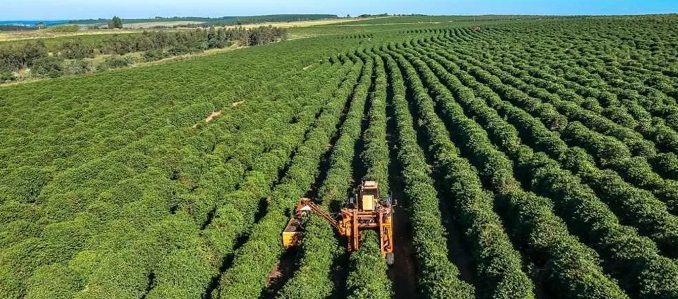The History of Ethiopian Coffee
Introduction
Ethiopia, the legendary land of Africa, is considered the birthplace of Arabica coffee. Ethiopian coffee beans not only carry rich and unique flavors but also hold a long and colorful historical story. The history of Ethiopian coffee is a journey from the accidental discovery by the goat herder Kaldi to the development of a distinct coffee culture and the spread of coffee around the world.
Legendary Origins
According to legend, in the 9th century, a goat herder named Kaldi discovered the coffee plant. One day, Kaldi noticed that his goats became excited and full of energy after eating red berries from a strange plant. Kaldi decided to try the berries himself and experienced the same effects. He shared his discovery with a local monk, who then processed the berries into a drink that helped him stay awake during long prayer sessions.

The Spread of Coffee
The story of the coffee plant quickly spread throughout Ethiopia and then to the Arabian Peninsula. By the 15th century, coffee had become an integral part of Arab culture, particularly in Yemen. The Arabs began cultivating coffee and developing processing methods, turning it into a valuable commodity. From Yemen, coffee continued its journey to Egypt, Turkey, and throughout the Ottoman Empire.
Coffee Reaches the World
In the 17th century, coffee began to spread throughout Europe. Venetian merchants brought coffee from the Middle East to Italy, from where it spread across the continent. The first European coffee house opened in Venice in 1645. Coffee quickly became a popular beverage, enjoyed in coffee houses from London and Paris to Vienna. These coffee houses were not only places to enjoy coffee but also cultural hubs where people met, discussed, and exchanged ideas.
Coffee Culture in Ethiopia
In Ethiopia, coffee is not just a beverage but an important part of culture and daily life. The traditional coffee ceremony, known as "bunna," is an essential part of festivals, family gatherings, and community discussions. This ceremony often lasts for hours, beginning with roasting the coffee beans, grinding them finely, and brewing them in traditional coffee pots. Each stage of the ceremony is performed carefully and meticulously, reflecting the Ethiopian people's respect and hospitality.

Ethiopian Coffee in Modern Times
Today, Ethiopia is one of the world's leading coffee producers. Famous coffee-growing regions like Yirgacheffe, Sidamo, and Harrar have become symbols of the quality and unique flavors of Ethiopian coffee. Beans from these regions are known for their complex flavors, often featuring floral, fruity, and chocolate notes. Coffee production in Ethiopia still adheres to traditional methods, using no chemicals, which helps preserve the environment and maintain the natural flavors of the coffee.
Characteristics of Coffee-Growing Regions
- Yirgacheffe: Known for its delicate, floral flavors and light acidity. Coffee from Yirgacheffe often has complex and rich flavors, making it a favorite among coffee connoisseurs.
- Sidamo: Features a balanced taste with fruity notes and a mix of sweet and sour flavors. Coffee from Sidamo provides a perfect coffee-tasting experience with its harmonious combination of flavors.
- Harrar: Famous for its bold, robust flavors with dried fruit and chocolate notes. Coffee from Harrar often has a distinctive bitterness, suitable for those who enjoy strong and characterful flavors.
![]()
Impact and Significance
Coffee is a vital part of Ethiopia's economy and culture, creating millions of jobs and shaping global coffee consumption trends. Coffee is not only the primary source of income for millions of Ethiopian farmers but also a cultural symbol, connecting generations and communities. Ethiopian coffee stands out for its high quality and unique flavors, beloved by coffee enthusiasts worldwide. Beans from Ethiopia have contributed to the reputation and development of the global coffee industry.
Challenges and Future Prospects
The Ethiopian coffee industry faces numerous challenges such as climate change, pests, and economic difficulties. Climate change significantly affects natural conditions, altering the habitat of coffee plants and causing difficulties in maintaining coffee yield and quality. For sustainable development, Ethiopia needs to invest in scientific research, technological improvements, and efficient supply chain management. The government and international organizations also need to support local farmers in coping with climate change and protecting the environment.
Conclusion
The history of Ethiopian coffee is a long and rich story, beginning with the accidental discovery by the goat herder Kaldi to the development of a distinct coffee culture and the spread of coffee around the world. Ethiopian coffee is not just a beverage but a symbol of cultural, historical, and traditional connections of a legendary land. Beans from Ethiopia have captured the hearts of coffee lovers worldwide, bringing rich flavors and the compelling historical story of this African land. Preserving and developing the Ethiopian coffee industry is not only economically significant but also contributes to preserving and promoting the cultural and historical values of one of the cradles of global coffee culture.
![]()
S54 Coffee

